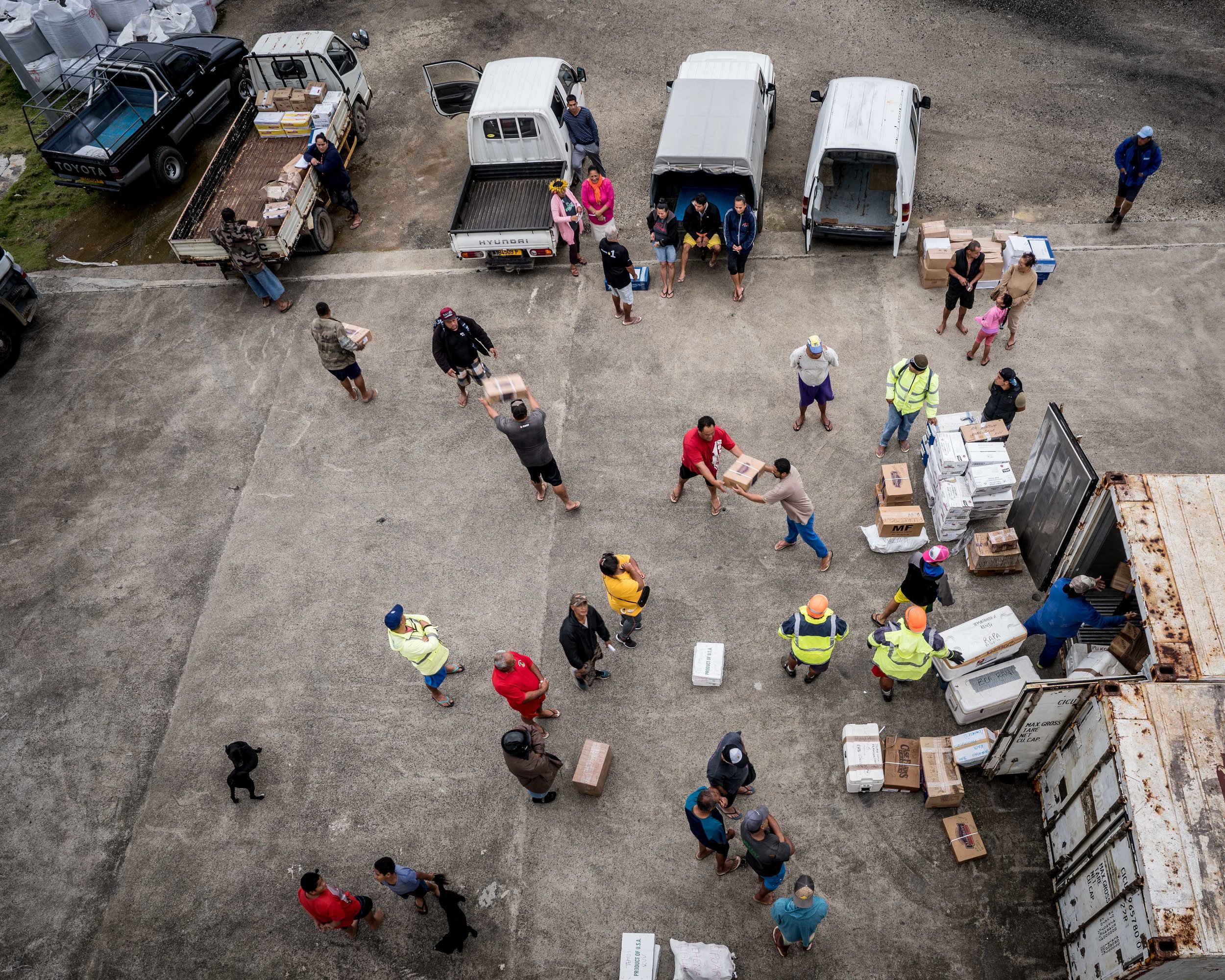
the tuha’a pae IV
the lifeline of the australs
The cargo ship on which I traveled, the Tuha’a Pae IV, serves as both supply line and transportation from Tahiti to all the populated islands of the Austral archipelago. Four decks high in the aft of the ship, it is a sizable freighter, capable of transporting approximately 30 shipping containers. Every month, the Tuhaa Pae IV leaves from Papeete and travels south, filled with cargo for each island—and with islanders headed home. On a normal voyage, the ship stops at Rimatara, Rurutu, Tubuai, and Raivavae before heading back to Tahiti. Once every three months, however, it visits Rapa Iti, the most remote of the Australs, which lies a further two days’ sail from Raivavae. I had waited patiently for more than a year to catch one of these particular tours that included a stop on Rapa Iti.
I spent 11 days on board the Tuha’a Pae IV as the only non-native passenger. My inability to speak French made conversation difficult, though a couple of the crew members spoke a bit of English and were able to answer some of my questions. I was given my own cabin on the third deck in the aft of the ship, which was comfortable enough. There was no electronic service of any kind — no wifi and no cell phone signal — so most of my time was spent reading, writing up my notes, or working on photographs at the tiny desk in my quarters. I ate meals with the crew and other passengers —breakfast at 6 am, lunch at 11 am, and dinner at 5 pm — and if I was lucky, there would be coffee in the afternoon. We would sail straight through the night, arriving at each of the islands in the early hours of the morning. I would have my breakfast, pack my camera bag, and go ashore. At each island, I had the day to explore while the crew unloaded cargo from the ship, and would return to the ship in the late afternoon for our departure to the next island.
One of the cultural highlights of this voyage for me occurred late in the evening on the day before we arrived at Rapa Iti. I came downstairs to stretch my legs and take a break from working in my cabin, and found the mess full of people. All of the men heading to Rapa were packed around the tables, singing traditional Austral songs together at the top of their lungs. Two men had guitars and another a ukulele. They invited me to pull up a chair, which I did for a few minutes, before disappearing upstairs to get my camera and couple of lenses. They all looked so happy and everyone knew the words to all the songs, which were sung in their local Austral dialect (a variant of Tahitian), rather than in French. At one point, one of them handed me the ukulele, which I politely declined, but they didn’t seem bothered at all by my taking photos.
In addition to this occasion, some of the most touching moments I witnessed were at the harbors on these islands, as we were waiting to go back to the ship, and the locals were saying their goodbyes to their loved ones. The islanders are a very sweet people. Their goodbyes were emotional, their laughs genuine and heartfelt. The little ones were passed around freely, and the atmosphere was very communal. The locals wouldn’t speak with just one or two people; everyone mingled, even people from other islands that were visiting. It was subtle, but it was a different sort of interaction than I had seen in other parts of the world, perhaps in part a response to the isolation of living on a tiny speck of land in the middle of the Pacific Ocean.




